Long-haired Chihuahua: color options, character, rules of care
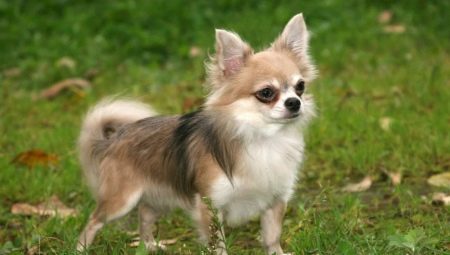
The Chihuahua breed is gaining more and more popularity as an ornamental, but it has a rich and very interesting history of origin. With all this, the long-haired representatives of the species do not differ much in character and habits from their short-haired counterparts.
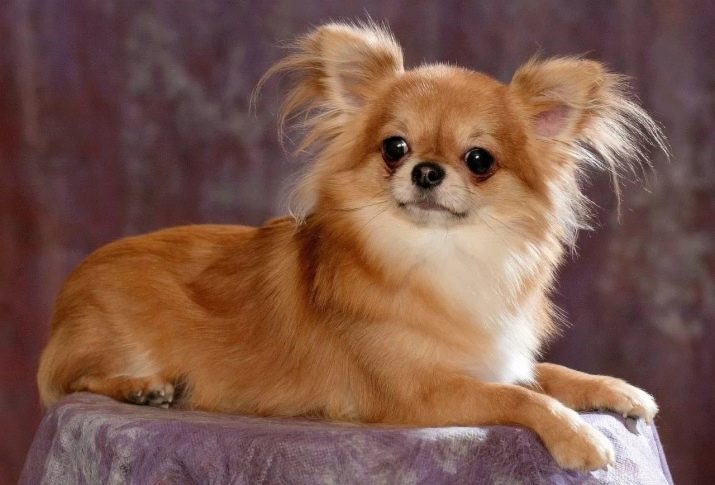
Origin story
Like many modern dog breeds, much of the Chihuahua's history is shrouded in mystery. Historians continue to speculate on the breed's true origins, but most agree that it leads to Mexico. It was here that the first representatives of the Chihuahua, widely known to the world, were discovered, and this happened in the mid-1800s.
According to some reports, in 1884 merchants in Mexico began to trade the small long-haired Chihuahua. Tourists became the main buyers of the animal, many of them returned to the United States with their dogs and began to keep them in the house as a decorative pet.Then the breed did not have an official name, for this reason it became known under different names. As a rule, the owners named them after the American state where they were imported.
You could often hear how the fluffy Chihuahua is called the Mexican, Arizona or Texan (Teichi) dog. Only the last of the proposed names has stood the test of time and was recognized as official.
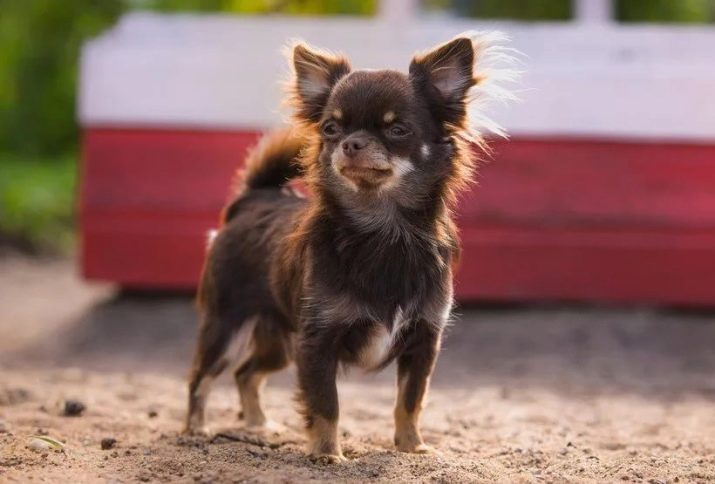
There is a theory that is more popular. According to her, Chihuahuas are the ancestors of another wild dog breed that Mesoamerican civilizations were able to domesticate, but if you compare animals, then Teichi are twice as large as modern Chihuahuas.
Following this theory, it is safe to assume that either the Maya or the Toltecs were the first to tame the Teichi. They viewed dogs as guardians of the afterlife, using them in funeral ceremonies and as a source of food. They often sacrificed them, made them from an animal mummy, and buried them together with the owner in the same tomb, believing that it would join him in the afterlife. The Maya even had 9 different words in the language for dogs, some of which related to specific varieties. It is not known what breeds were domesticated, but historians believe the Teichi were on this list for sure.
When archaeologists excavated ancient burial mines in Colima, Mexico, they found stuffed animals and sculptures dating back to 300 BC. e., depicting a dog that bore a striking resemblance to a Chihuahua. Toys for dogs were also found there.
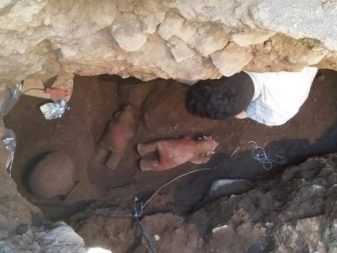

A recent study of Chihuahua DNA may shed light on the breed's origins. Researchers at the KTH Royal Institute of Technology in Stockholm, Sweden have attempted to understand where the roots of the most famous dog breeds come from. For this, it was necessary to compare the mitochondrial DNA of the described breed with animals from Asia and Europe, as well as archaeological finds, in order to trace whether there is a connection between them.
As a result, scientists never found any connection between the described breeds. However, they found a unique type of Chihuahua DNA that is also present in pre-Columbian samples. All this allowed us to conclude that these animals appeared on the territory of Mexico before European explorers landed there.

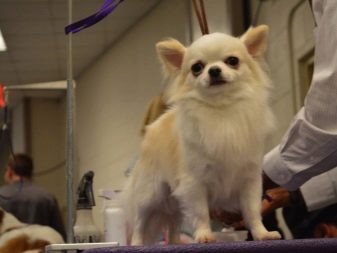
The first story that described a Chihuahua was written by James Watson. During a trip to San Francisco with the intention of visiting a dog show held back in 1888, Watson stopped at El Paso and deliberately crossed into Mexico to learn more about the Chihuahua. Here he bought one dog and gave it the nickname Manzanita. The purchase price was $ 5. After some time, Watson returned and bought several more animals, among which was Juarez Bell - the first known champion of the described breed.
In the 1890s, the President of Mexico gave Adeline Patti, then a famous opera singer, a bouquet of flowers, where he hid a small Chihuahua. After that, the dog was everywhere and always with its mistress.
Karl Lumholz, a Norwegian indigenous Mexican researcher, wrote about the Chihuahua in his two-volume collection. He described the breed as timid, with erect ears, protruding eyes, and a small hole in the top of the skull.




Description of appearance
The shaggy Chihuahua has a special charm. If we turn to the classic description of the appearance, then adult dogs reach a maximum of 230 mm at the withers, the minimum height is 150 mm. As the standard recognized by dog breeders shows, the weight of an individual can range from 1 to 3 kilograms.

In terms of appearance, the dog's head is very similar in shape to an apple. At the base, the muzzle is wide, but tapers towards the nose, which is not very long and is slightly upturned. Chihuahua bite is called scissor bite by veterinarians.
The described breed is characterized by large and slightly protruding eyes, which are usually brown. Ears are well open, erect, slightly tapering at the end.

The neck is not long, wool grows abundantly around it, from the side such a collar resembles a frill. The rib cage, despite the size of the dog, is well developed. It is oval in shape and cannot be round.
The legs are neat, oval, with spaced toes and long claws. The tail is rather thick at the base, but tapers towards the end. This part of the body is always facing the back. The dog holds the tail either in a half-ring or bends it strongly.
The long-haired breed is popular for its attractive appearance. Even without special care, the dog's coat is soft and easy to comb. If we compare it with the short-haired breed, such Chihuahuas have longer hairs in the abdomen, chest and tail, as well as on the legs and ears.
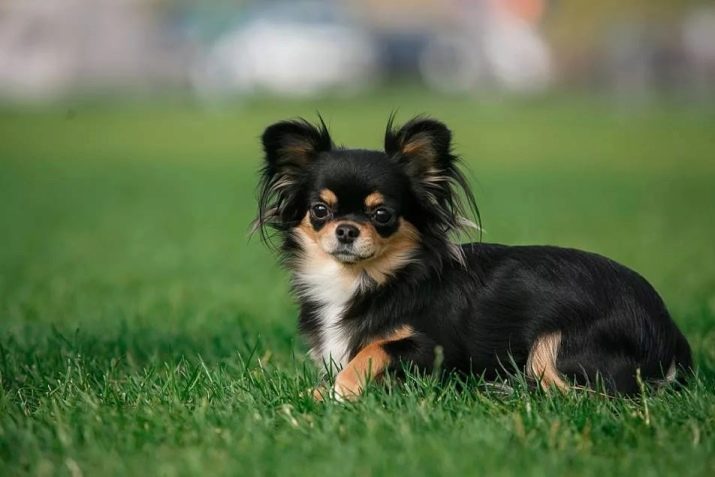
Character and habits
All representatives of the described breed love to sleep, especially at the age of puppies. They do this often and for a long time. If we talk about the nature of the animal, then small dogs have great pride, therefore easily take offense at the owner if he is careless about them.
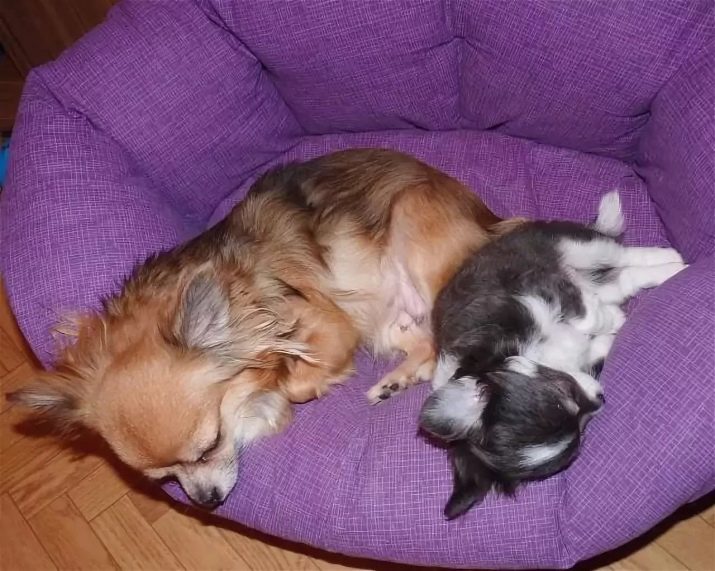
When the animal is awake, it loves to play, very active. Despite its small stature, the Chihuahua very zealously defends its possessions and toys and will not allow a stranger to touch them. Precisely because he is a born leader, he has a difficult time in the presence of other animals in the house. Apart from the owner, the dog rarely makes friends.
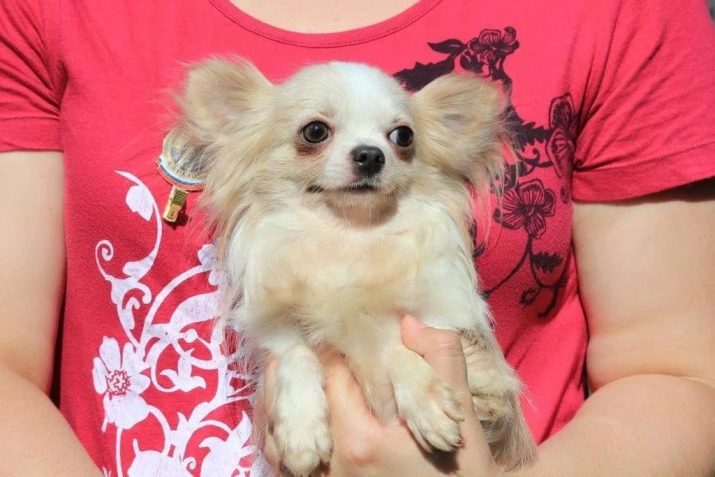
Chihuahua does not like strangers and always treats them with waryness. They, without hesitation, rush into battle if necessary. But the relationship with the owner is always very even and calm, they do not show aggression, but they do not like children and may even bite, because they will not allow themselves to be pulled and will not endure pain.
It is best to have such a dog in old age instead of a child, so that you can give it all your care. She will definitely adapt to her owner and will always take into account his mood.
This is the pet that will try to always be there, so sometimes it becomes too intrusive. If left alone, the dog will become homesick and may even become depressed.
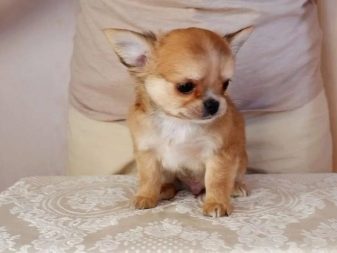

How many years do they live?
It should be said that different breeds also demonstrate different maximum life thresholds. Of course, among Chihuahuas, there are also centenarians with proper care. Their general health has a lot to do with how long a dog will live.
Representatives of the breed suffer from diseases affecting the joints and the musculoskeletal system. Their small paws with thin bones are prone to fractures and dislocations, so the animal should not be allowed to jump from great heights.
The dog reacts very badly to hypothermia, so you should take care of additional protection for them in winter and purchase clothes for your pet.
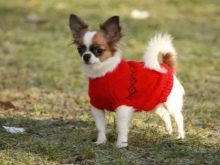
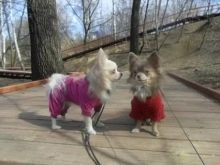
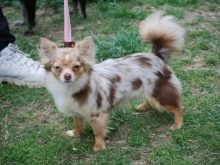
The quality of the feed also affects the general condition of the dog. Food should be fortified with minerals and vitamins. If you provide a Chihuahua with quality care, then the dog can live up to 15 years.
Often, a dog develops urolithiasis, which becomes a consequence of the animal's consumption of water and food with a high salt content. Low physical activity is due to poorly balanced food.

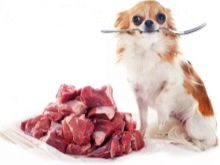
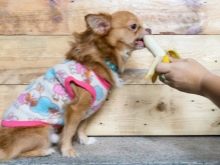
Be sure to check the animal from time to time for fleas, ticks and internal parasites. The vaccination schedule must be observed, since the Chihuahua has poor immunity.

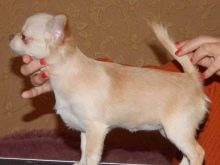
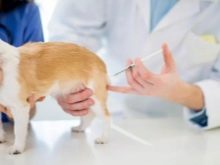
Types of color
There is no specific color that is assigned to the breed, but most often there are individuals of the following colors:
- redheads;
- white;
- fawn;
- black and red.
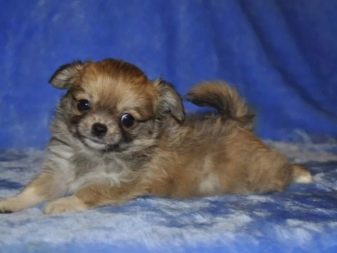
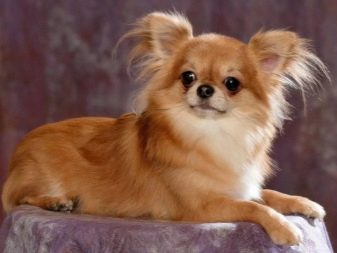
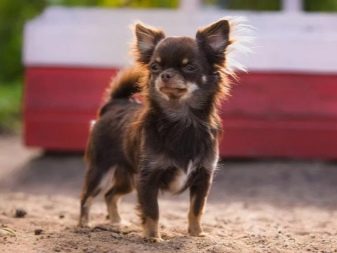

Puppies may be born with a darker color, but after the first molt they become a little lighter.
Red dogs may differ in color intensity. Sometimes it is a very light coat, and sometimes it is of a rich shade.Completely black individuals are extremely rare, however, as well as marbled color.
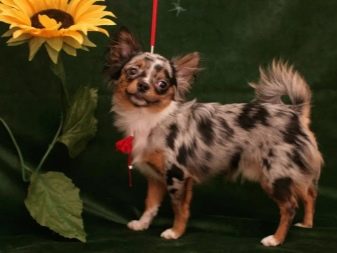
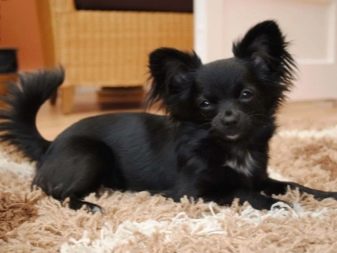
The cream and brown colors have their own unique appeal, especially in the long-haired breed.
You can buy a dog in a chocolate shade or even brindle.
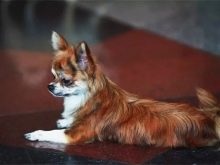
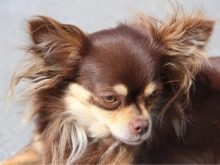
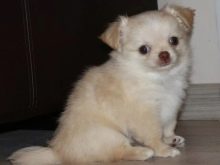
Chihuahuas are especially popular in blue or purple, which are not so common.
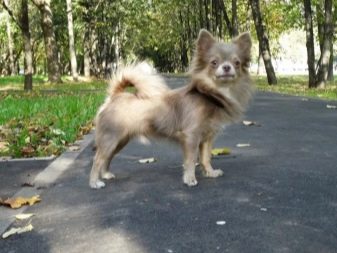
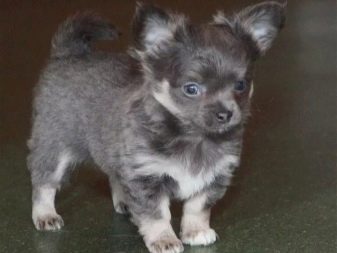
How to choose a puppy?
If you want to buy a puppy of the described breed, it is better to contact a specialized nursery. The offspring, which is acquired from an experienced breeder, have good genetics, moreover, they are purebred individuals.
It is also possible to determine by its appearance whether the puppy is healthy or not. He should have an apple-shaped head, clean ears without any foreign unpleasant odor and discharge. Pay special attention to the nose, which is not only wet but also cold in a healthy dog.

Sometimes long-haired Chihuahuas have a slightly wavy coat, but in any case it is soft and thick. You can move it slightly to study the skin in more detail. It should be free of irritation, scales or red spots.
Healthy puppies gladly climb to get acquainted, but if the dog is hiding, it is either afraid or unhealthy, in any of these cases it is not worth acquiring it.
The body of the puppies is dense, they are small, but plump, if they are thin, then most likely they have worms.
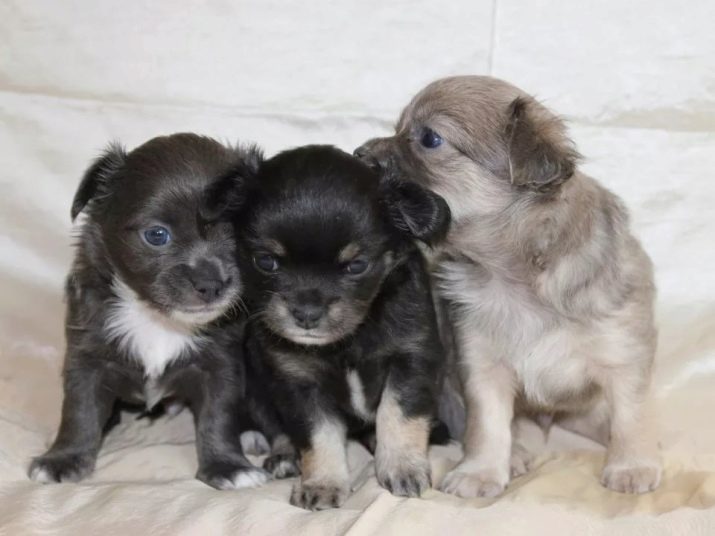
Conditions of detention
Most Chihuahua breeders try to bathe their dog as often as possible, but this is wrong. It is enough to carry out the procedure twice a month to keep the animal healthy and clean. Use a specialized hypoallergenic shampoo for this. After that, the wool is washed from the shower and dried with a hairdryer. Do not leave the animal wet as it may catch a cold.
It is not enough to wash the wool, you need to trim it in time. A haircut for this breed is important, so it is advisable to seek help from specialists.
A haircut can be of two types:
- model;
- hygienic.
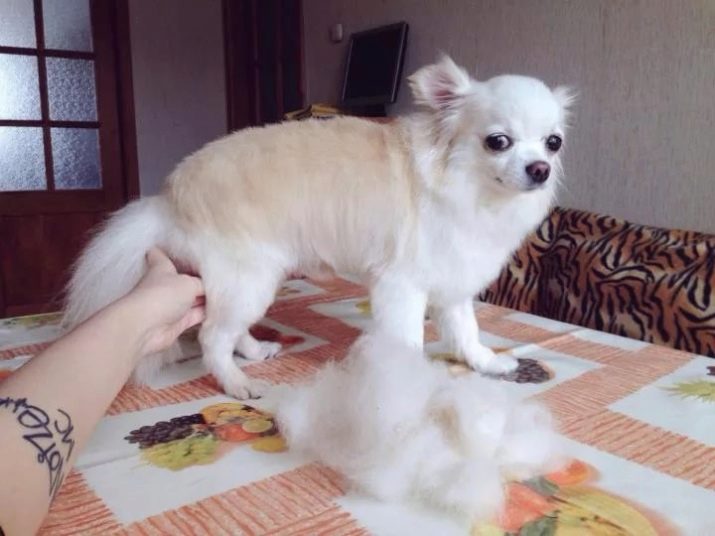
Hygiene is part of the dog's grooming process. Removing unnecessary and excess hair allows the skin to breathe better. This is very important if the Chihuahua is kept in hot climates where it can suffer from overheating. Long hair is shortened in several areas on the body:
- back;
- stomach;
- sides;
- armpits;
- tail;
- paws;
- breast;
- groin.
The procedure is performed twice a month. You can trim the dog yourself, but then it's worth at least watching a video for a start on how to do it right. It is important to cut the paws, tail, and other areas very carefully to avoid damaging the skin.
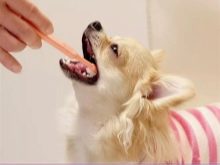
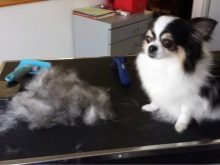
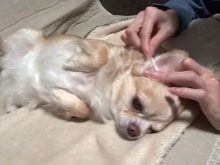
If the animal sheds, it is better to comb it out more often., otherwise the wool will remain not only on the floor, but also on the upholstered furniture, which is why additional cleaning will need to be carried out in the apartment.
Model haircuts are necessary for those dogs that perform at shows. They are held a few days before the release and demonstration of the animal's merits.
The pet is combed out every day, sometimes several times, if the dog often walks on the street. For this, a special comb is purchased. If tangles form, then it will be more difficult to remove them, and with a large accumulation of them, the animal dies, since pathogens begin to multiply inside them.
From time to time, it is worth checking the skin in order to identify the appearance of fleas or ticks in time. You can train the animal to toilet on the tray, then in bad weather there will be no problems with how to walk the dog.
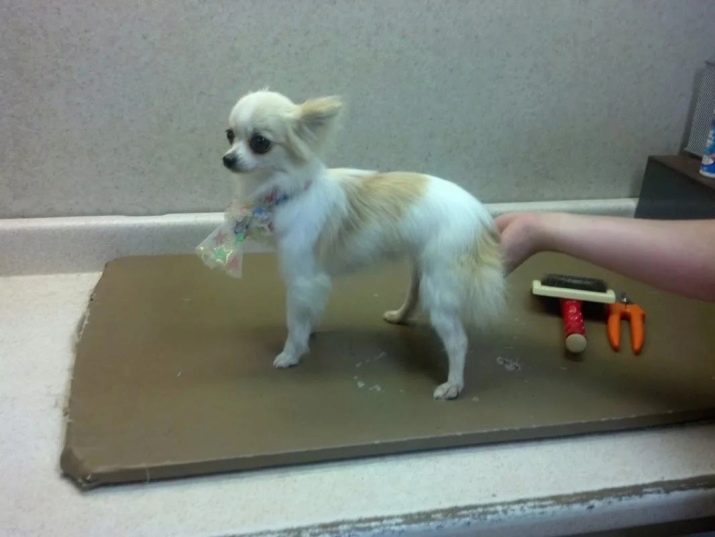
Special attention is paid to the nutrition of the Chihuahua, since it should include stern only premium. It is best to give natural products, including meat, you can feed them with dry food. The diet must necessarily contain fermented milk products, cereals, fish and even vegetables. Additionally, they give vitamin complexes. Carbohydrates and proteins in the diet must be present in a ratio of 1/3.
Puppies are fed up to 5 times a day, an adult is given food 3 times a day. It must be remembered that Chihuahuas can suffer from food allergies, so new foods are introduced into the diet gradually and in small portions. Fried, spicy and sweet foods are strictly prohibited.

The teeth of the animal require special hygiene. Sometimes it happens that dairy falls out later than the due date, in which case the bite is formed incorrectly. Caries is the second problem that the owner should pay a lot of attention to. As a prevention of both problems, it is necessary to produce brushing your dog's teeth several times a week... There are special brushes and tools for this.
Due to the slightly protruding eyes of the dog, from time to time they are treated with moisturizing drops. This treatment solves the problem of the formation of lacrimal pathways around the eyes.
The nails will also require attention, which do not grind off on their own, even if you provide the dog with the necessary toys. It is best to remove all excess with a claw cutter.
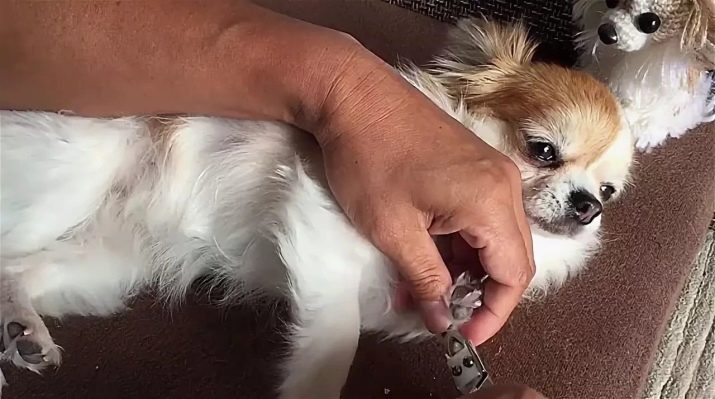
Training
If you do not take up the upbringing of the dog in time, it will behave badly, start bullying, bite and it will be impossible to fix it later. Therefore, training is practiced from a very early age. Small stature and incredibly large ambitions will quickly turn the animal into an uncontrollable whirlwind in the house. Everything will suffer - from shoes to furniture. Chihuahua, if you do not put him in his place, will quickly think of himself as the master.
It is not at all necessary to use physical influence as a punishment, the dog perfectly understands the intonation in his voice and welcomes treats as a reward.
You shouldn't expect much from a dog, but it can carry out the simplest commands with a little effort. It is not even necessary to hire a specialist for training.
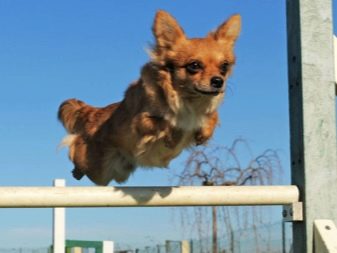
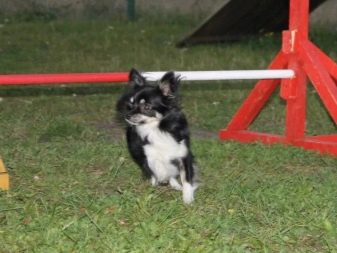
The dog must know not to eat food from the ground... Be sure to train walking on a special habits, so that, if necessary, you can reduce the distance between the owner and the animal. This is very important when walking is not carried out in a park area, but, for example, not far from the road. Chihuahuas can chase a cat or other dog, they are not used to hiding or standing to the side. Such behavior and inattention of the owner often lead to sad consequences.
Representatives of the breed are very fond of learning something new, examining the bushes and grass, they are always happy to go for a walk. It is important to teach the animal not to take food from the wrong hands.
In the house, you need to train the dog so that, even if there is a tray, it tries to endure it before the walk. The animal is walked at least 2 times a day, usually in the morning and in the evening. In addition, you will need to accustom the Chihuahua to clothes, so they wear it from early childhood, then it will help keep it from hypothermia.
For Chihuahua hair care, see below.






































